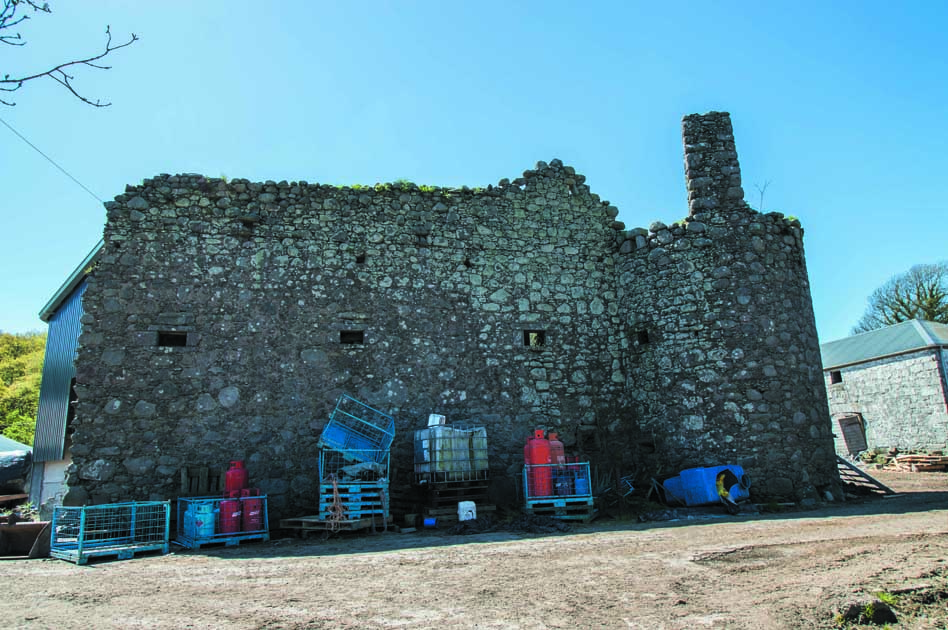Auchenskeock Castle

Auchenskeock Castle Details
Auchenskeock Castle, ruins presumed to represent C16 tower house within working farmyard
- Closest To: Dalbeattie, Caulkerbush
- Access: S.O.A.C. Public Access
- Grid Reference: NX917588
Auchenskeock Castle is a ruined tower house of sorts which lies entirely within the yards of a working farm. It sits part way up a slope overlooking the Southwick Burn to the north-east. The remains consist of a round tower with a tall chimney stack, accessed through a ruinous opening representing doors at first and second floor level, and a single length of thin (c 60cm thick) walling extending to the south-east. On the south-west side of the tower is evidence of a further section of wall extending in that direction. The internal side of the wall, some seven metres high, is obscured by the construction of a large barn immediately adjacent.
The lands of Auchenskeock were leased from the crown by various individuals in the latter 15th century, first appearing on record in 1462. In 1490, the feu was issued to John Lindsay, son of the laird of Fairgirth, a grant renewed in 1499. Lindsay was succeeded at Auchenskeock in 1508 by his son James, both men serving as King James’ falconer, but the lands were held by John’s widow Marion Bonkle until at least 1532. James Lindsay continued as falconer to King James V, and then to Queen Mary, up to his retirement in 1562, when a grant was issued to him and his son John for the lands to be held in liferent. After being outlawed in 1587 for failing to deliver one of his tenants for purchasing stolen goods, John eventually died in 1628, bailie of Lord Herries, and at feud with his cousins of Fairgirth, by which time the superiority of the estate had passed to the Douglases of Drumlanrig. The feud was to do with the assault upon John of Auchenskeoch in 1612 by Fairgirth and his sons, and left for dead on the field. The matter was not resolved by 1621 when sons of Fairgirth assaulted Johnstone of Seyfield in Dumfries – for being “affectionat” to the Auchenskeoch family. His son James quickly fell into financial difficulty, perhaps due in part to his wife’s Catholicism, and mortgaged Auchenskeock to Patrick Young, a Dumfries chirurgeon, in 1631. Ten years later James Lindsay was excommunicated, having refused to sign the Covenant. In 1648 the lands were apprised to Patrick Young, and in 1654 the lands were granted by Cromwell to his son (another Patrick) to recoup his loan. In 1684, “Achinskioch” was listed as one of the “considerable houses” but not described. In the end Auchinskeock was never reclaimed from the Youngs, and in 1780 they were sold to Thomas Crichton. What happened in the end to the castle is unclear, but a large portion was taken down in the 19th century, when it was mostly derelict. On more than one occasion the castle was described in late 19th century texts as “probably” having been a square courtyard with a tower at each angle, but this seems to be speculation, and one has to wonder about the veracity of the Z-plan tower house idea as well. In the absence of much architectural detail, one can assess that the castle was built between 1550 and 1650, but in the absence of any evidence for vaulting, it seems probable that a later date is more probable. A plan of the farm dating to 1772 is available to see at the National Archive, which might show the castle standing or as a more extensive ruin -but I have not been able to do this at the time of writing.
Become a supporter of my work to access a more detailed history